
Land iguana, Galapagos National Park / Kurt Repanshek
It’s been a month since the last quiz, hasn’t it? Or practically a month. Has that been enough time to bone up on your knowledge of national parks and other protected lands? Test your knowledge with the following quiz questions and trivia bits to see just how much you know before looking at the answers at the bottom of this article.
1. A visit to Galapagos National Park will blow your mind with the explosion of wildlife. One of the creatures you’ll see often is the land iguana. These lizards can live to be between 50 - ___ years old.
a) 69
b) 74
c) 82
d) 100

Fierce-looking statues at Puʻuhonua o Hōnaunau National Historical Park / NPS
2. These statues in the above image captured at Pu’uhonua o Hōnaunau National Historical Park are called ___.
a) ki’i
b) akua
c) pōhaku
d) pūnohunohu

You might be lucky enough to spot a pink lady's slipper orchid while hiking Prince Williams Forest Park / NPS
3. While wandering Prince William Forest Park, you might come across this beautiful orchid, native to the park, called the pink lady’s slipper. True or False: the pink lady’s slipper is one of the smallest native orchid species.
a) True
b) False

A beautiful blooming serviceberry tree, Sleeping Bear Dunes National Lakeshore / NPS - C. Olsen
4. A springtime hike at Sleeping Bear Dunes National Lakeshore will bring you into contact with blooming serviceberry trees and their “delicate and beautiful white flowers.” This tree has other common names like shadbush, shadblow, and ___.
a) Sugarplum
b) Funeral tree
c) Bear feeder
d) Spring white
5. True or False: Anna’s hummingbirds are often one of the earliest spring bird migrants to return to Bandelier National Monument.
a) True
b) False

A big "chonk" of a lizard, Organ Pipe Cactus National Monument / NPS
6. So there you are, walking along a trail at Organ Pipe Cactus National Monument, when you come across a quite large, slow moving, “chonk” of a lizard. You are probably looking at a gila monster (they really aren’t monsters, you know). True or False: Gila monsters spend 98 percent of their lives in their burrows.
a) True
b) False

A pair of red-footed boobies, Galapagos Island National Park / Kurt Repanshek
7. True or False: Red-footed boobies may be seen up in the trees, but they only nest on the ground beneath the trees.
a) True
b) False
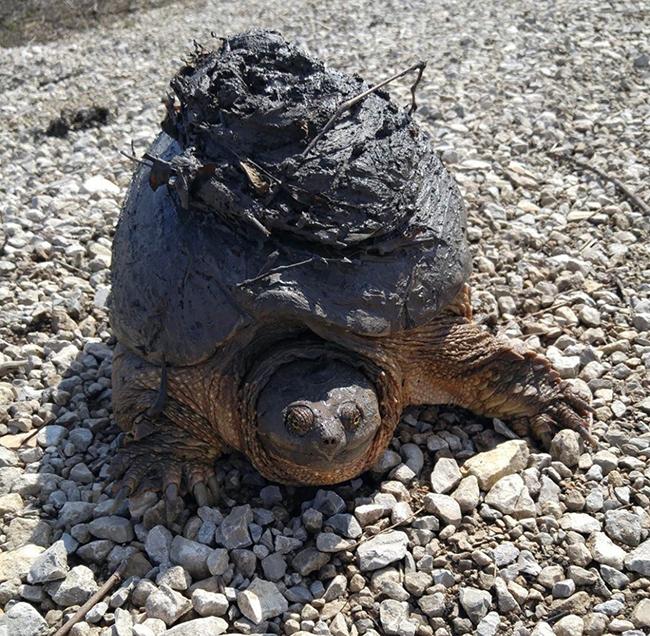
A mud-blobbed snapping turtle / USFWS
8. The image above is of a snapper turtle freshly emerged from an underwater winter slumber. “Cold-blooded animals like this snapper can slow down their metabolism and rely on stored energy to survive, a method of overwintering called ___.”
a) bromination
b) boration
c) beration
d) brumation
9. Let’s stick with that turtle and its mud blob topper for just a bit longer. The previous question mentioned that this turtle had just emerged from an “underwater winter slumber.” Yes, they can spend their winter in the soft soil at the bottom of water bodies like lakes and ponds, but how do they do that all winter when they have lungs and breath air? True or False: turtles breathe through their butts when they spend the winter underwater.
a) True
b) False

The trail into the trees, Crater Lake National Park / Rebecca Latson
10. Crater Lake National Park is so much more than a large caldera filled with of deep blue water. It’s also a landscape populated by four forest zones: ponderosa pine, lodgepole pine, mountain hemlock, and ___.
a) Whitebark pine
b) Douglas fir
c) Western red cedar
d) Bristlecone pine
Trivia
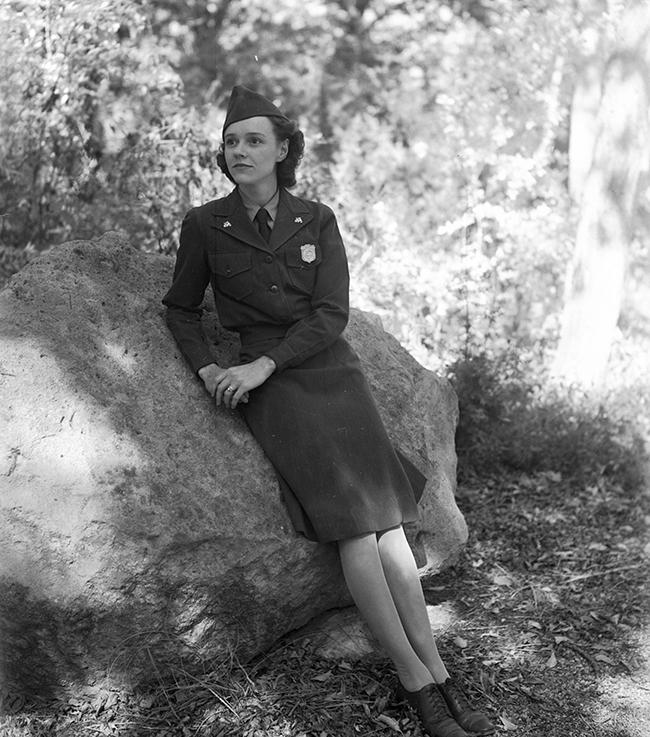
The National Park Service uniform for the ladies / NPS
“The history of the NPS uniform is as long and complicated as the history of the United States. Having a distinctive, easily recognizable uniform has been a top priority of the National Park Service since the 1920s … The earliest NPS employees did not wear a specific uniform. It’s unclear whether or not they even wore badges. The first explicit reference to badges for rangers relates to their use by Yellowstone National Park scouts in the late 1800s. Even after the badge became standard for the job, women were not authorized to wear the official NPS badge for many years. Instead, they were issued a ‘silver arrowhead pin’ the size of a tie tack instead of a badge. Finally, in the spring of 1978, the National Park Service authorized women to wear the same ‘green and gray’ – in all its forms – as their male counterparts (including the badge!).”
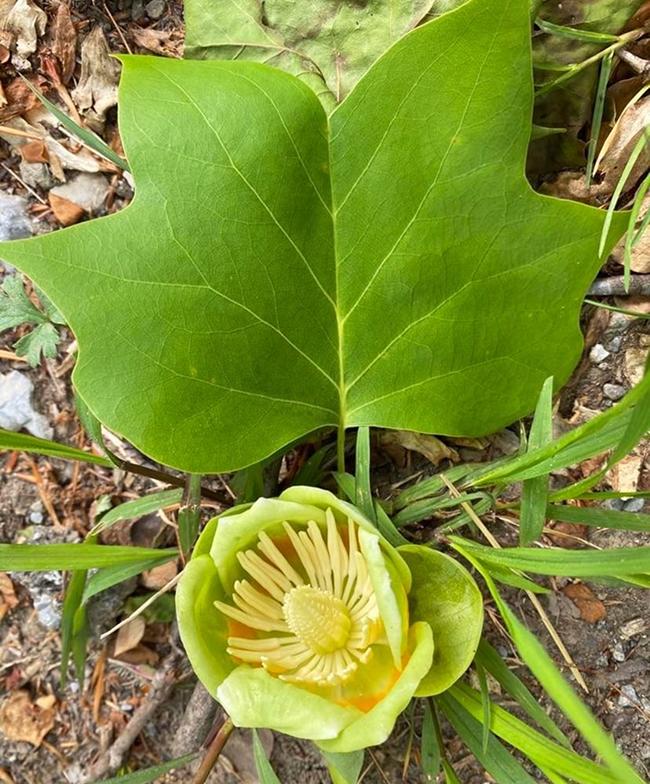
A tuliptree bloom and leaf, Great Smoky Mountains National Park / NPS
“Be on the lookout for these green and orange flowers on the forest floor at Great Smoky Mountains National Park this May. These flowers grow at the top of the tuliptree or yellow poplar (Liriodendron tulipifera). Historically, tulip trees were used by people for building cabins and barns on homesteads and were prized by early loggers since these trees have long straight trunks. [You can] see record-sized, old-growth trees along the Albright Grove Loop Trail, near Cosby, Tennessee.”

A turtle nest stringer, Padre Island National Park / NPS
“[At Padre Island National Seashore,] one way park biologists document nesting sea turtles is with a colorful string that is inserted into the nest cavity. They secure the opposite end of the string to a lollipop stake that is placed to identify the nest location. This colorful string is called a “stringer” because it is used to mark where sea turtle eggs are located within the larger nest area … When park personnel arrive to excavate the nest and collect the eggs for protected incubation, those lollipop stakes are the visual cue to locate the nest, and the attached stringer leads them straight into the nest cavity where the eggs are contained and covered with sand. And just how is the stringer placed into the nest without scaring the turtle? Well, when turtles lay their eggs they enter a trance-like state, creating the perfect opportunity for trained biologists to approach and place the stringer in the nest without spooking her.”
Quiz Answers
1a
Land iguanas can live to be between 50 - 69 years old. Here’s some more interesting trivia about this yellow-colored land iguana. According to animalia.bio, land iguanas’ primary food is prickly pear cactus, and these cold-blooded lizards have tough, leathery mouths that allow it to munch on their primary food source. Land iguanas can grow to lengths between three to five feet and have a body weight of 25 pounds, although “size and weight are different on different islands.”
2a
“A ki’i is an image, statue, or likeness that serves as symbolic representations of the akua, or the multitude of Hawaiian gods, deities, and venerated ancestors. While images most commonly took the form of wooden carvings, they were also formed out of pōhaku (stone), carved into pūnohunohu (sea urchin spines), or as ornate feathered images.”
3b False
The pink lady’s slipper is one of the largest native orchid species. “They have a symbiotic relationship with a fungus to provide nutrients to the plant, which means transplanting or picking them generally kills the plant.”
4a
The serviceberry tree’s other common names are shadbush, shadblow, and sugarplum. “The flowers give rise to the name ‘serviceberry’ because legend has it that when they bloom, the ground is thawed enough for funeral services allowing the burial of those who died in winter.”

A black-chinned hummingbird looking for nectar at Bandelier National Monument / NPS
5b False
“Black-chinned hummingbirds (Archilochus alexandri) are often one of the earliest spring bird migrants to return to Bandelier National Monument. They can do this even though nighttime temperatures can still approach or attain freezing. Hummingbirds enter a state of semi-hibernation at night called torpor [wherein] the birds can reduce their body temperature to close to the ambient temperature of the air. In some cases, the birds’ body temperatures approach freezing … Black-chinned hummingbirds can be found in all parts of the park but often return first to the canyons and open mesas.”
6a True
Gila monsters are rarely seen because they spend 98 percent of their lives in their burrows. These lizards can measure up to 22 inches (55.9 cm) long, making them the largest lizard in the U.S. If you are lucky enough to see a Gila monster, just take photos and don’t touch. They are one of a few venomous lizards found in the world, and according to nationalzoo.si.edu, while “their venom is about as toxic as the western diamondback rattlesnake,” there is no antivenin for Gila bites.
7b False
A trip to Ecuador’s Galapagos National Park, the country’s oldest national park, will put you practically within arm’s length of all sorts of amazing birdlife, including the quirky-named booby. And while most boobies nest on the ground, the red-footed booby nests in trees, providing them a safe haven from predators and no competition for nesting sites. Red-footed boobies are the smallest of the booby species and the males use their bright red feet to show off to the ladies during mating season.
8d
“Cold-blooded animals [like that snapper turtle] can slow down their metabolism and rely on stored energy to survive, a method of overwintering called brumation,” in which they rely on their environment to help regulate their body temperature.
9a True
Ok, you can say the turtles “breathe through their butts,” although they don’t really have butts, but they do have cloacas located at the nether end of its body: “a versatile opening used for sexual reproduction and getting rid of waste.” That’s sort of like a butt, right? To stay underwater for so long, this turtle is using a process called “cloacal respiration,” which “draws oxygen from the water as it passes over blood vessels in their body – specifically their hind end, which is full of blood vessels.”
10a
The four forest zones you can explore during a visit to Crater Lake National Park are the ponderosa pine, lodgepole pine, mountain hemlock, and whitebark pine zones, each one named after its dominant tree species found in that area.

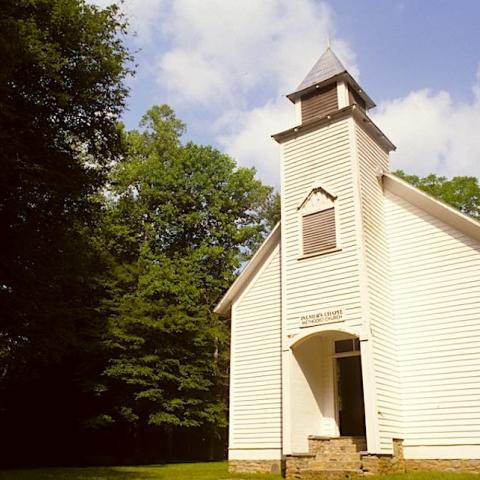

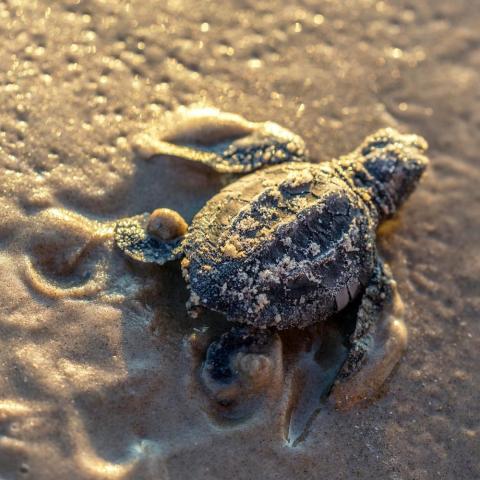
 Support Essential Coverage of Essential Places
Support Essential Coverage of Essential Places






